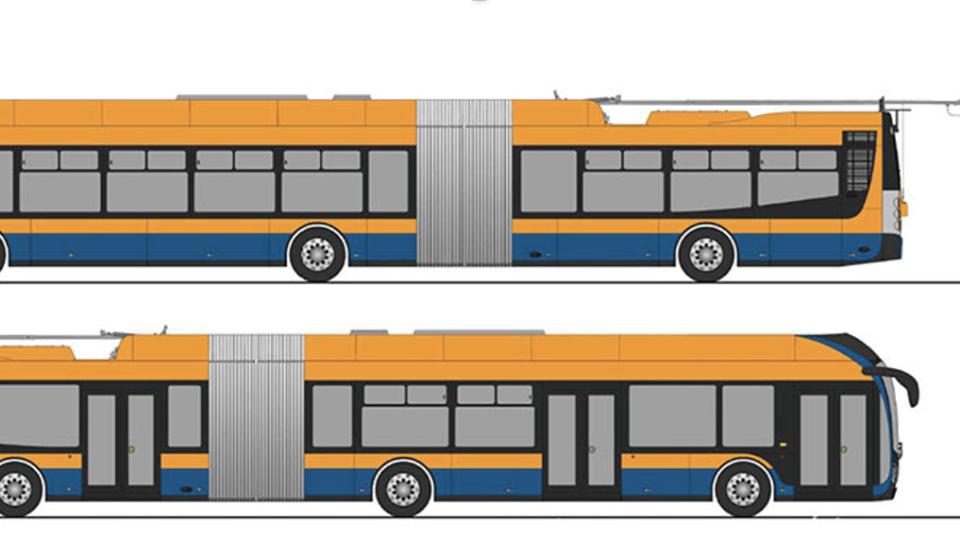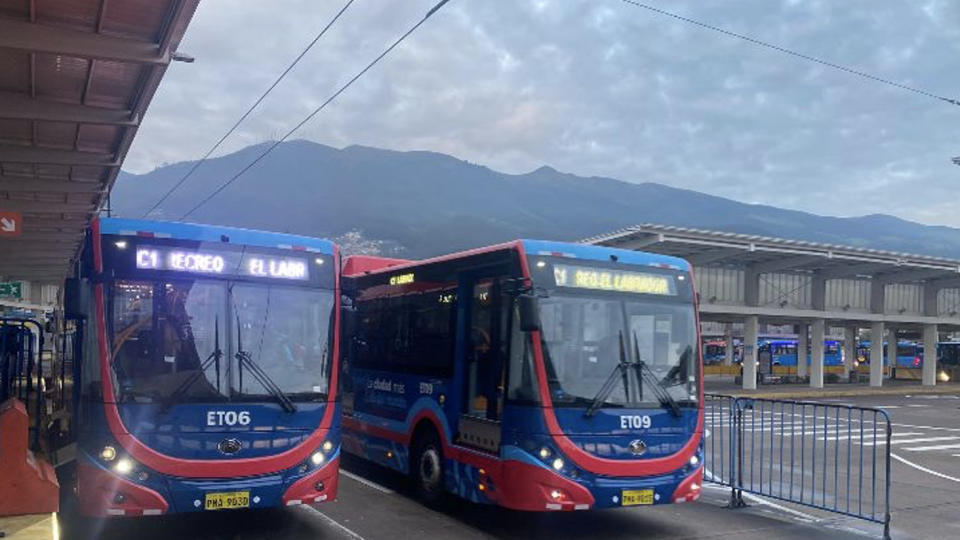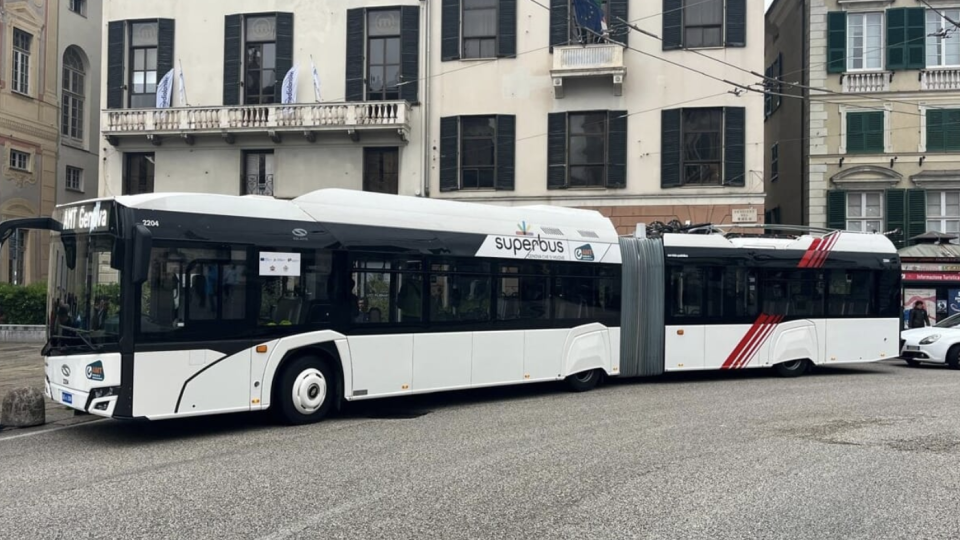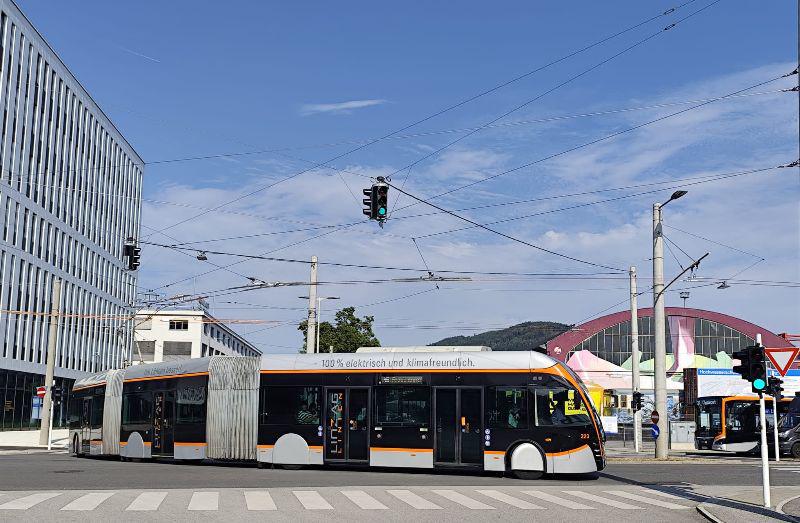Tramlink for the new tram line in Lausanne
After Berne, Basel, Waldenburg and Lugano, Tramlink will also arrive in Lausanne. On 10 November, Stadler Rail announced that it had signed a contract with the Lausanne network operator TL for the supply of 10 standard-gauge Tramlink trams for the future T1 line, as well as spare parts and equipment for maintaining the rolling stock. […]
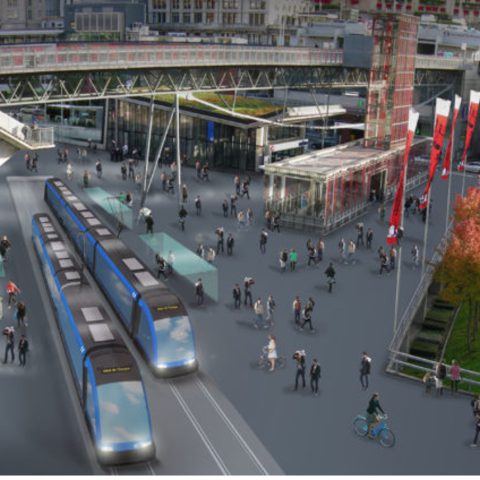
After Berne, Basel, Waldenburg and Lugano, Tramlink will also arrive in Lausanne. On 10 November, Stadler Rail announced that it had signed a contract with the Lausanne network operator TL for the supply of 10 standard-gauge Tramlink trams for the future T1 line, as well as spare parts and equipment for maintaining the rolling stock. The gauge, unprecedented for a Swiss tram network, will be 1,435 mm.
The T1 line
The T1 line is part of the “Axes Forts” project to upgrade the electric traction connections in the territory, which includes the construction of rail and road power lines, to be activated by 2026, and will be integrated with the other modes of transport in the territory, an extensive trolleybus network, two light rail lines, the Lausanne – Echallens – Bercher regional railway, which now runs as far as the city centre, in Flon, as well as the urban and suburban railway network operated by the Federal Railways. The line is financed by the Canton of Vaud and the Swiss Confederation. The municipalities affected by the presence of the tramway will finance some urban development work.
The tramway in Lausanne is a welcome return. The first tramway line was opened in 1896, and the expansion reached 66 km in 1933. In 1932, however, the first trolleybus line was put into operation and as early as 1938, the tramway lines were discontinued in favour of the trolleybus, which was considered more flexible and suitable for overcoming the numerous climbs . The tram made its last run in 1964.
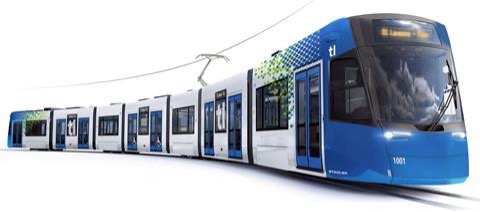
The rail system was not forgotten, however, and in the 1980s the planning of a light force metro system connecting the city centre with Renens, passing through the university institutes, began. The material would have been closer to the tramway model than the classic metro.
The first light metro line (M1), opened in 1991; 8 km long and with 13 stations, the line was an immediate success with the public. The second line (M2), opened in 2008 between the district of Ouchy, on the shores of Lake Geneva, and Les Croisettes, north of the city, inheriting the old Flon – Ouchy section, travelled by cogwheel trains from 1958, and presenting many innovations, including automatic driverless running and the adoption of a rubber system (as in Paris) necessary to overcome the steep gradient between Ouchy and Flon.
Now it is the turn of the tram. The T1 line, work on which started in September 2021, proposes the Flon – Villars – S.te Croix link, passing through Renens, supporting other modes of transport, in particular the BHNS (Bus ad Haut Niveau de Service) trolleybus network, in a context where mobility by public transport is constantly increasing.
The line will be 6 km long and will run parallel to the Lausanne-Geneva line, with 10 stops, on average 500 metres apart. The first phase will open as far as Renens by 2026, the second phase, already authorised, will extend the line to Villars – Ste Croix in 2027, with 3 km and 6 more stops. Modal interchanges are foreseen at the terminus in Lausanne Flon, at the stops in Prelaz – les Roses (with BHNS), in Galicien (with BHNS), at Renens station (with the suburban network of the Federal Railways and the T1 tramway) and in Buyere (with BHNS), where residential and commercial development is planned. The tramway will intercept, among others, poles of attraction such as schools, theatres, sports centres, shopping centres. The journey time will be approximately 15 minutes from Flon to Renens and 23 minutes on the entire line. The planned frequency will be one passage every 6 minutes, from 5 a.m. to midnight.
The new line will save 850 tonnes of CO2 per year, and up to 10 % fewer private cars, with an emission reduction of 26% per year, in addition to the reduction of noise in the living environment. The number of passengers transported each year is estimated at 15,000,000. The new facility will also allow for area redevelopment. The stops will be specially designed and integrated into the landscape. Naturally, the disabled will have easy access to the tramway. Finally, the planting of 650 new trees is planned.
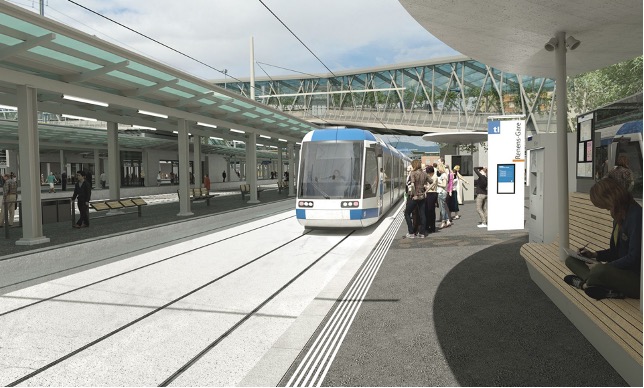
The tramlink
The first Tramlinks will be delivered by Stadler from 2025, in time for the first line trials. The cars will be the first 1,435 mm gauge Tramlink variants to run in Switzerland.
The vehicles will be seven-module, stainless steel-bodied, low-floor vehicles with air conditioning; 45 metres long, they will be able to accommodate 316 passengers, 45 of whom will be seated. Next to the doors will be three multi-purpose areas for wheelchairs, prams and bicycles.
The eight double doors on each side will be fitted with sliding steps to bridge the gap between the platform and the tram for rapid boarding and alighting. The passenger environment will be acoustically and thermally insulated.
The new T1 line is part of a new concept of modern, multimodal mobility, in which the citizen will be able to plan his journey with the greatest of ease, having a reliable, comfortable and user-friendly service at his disposal. Interchange will never be a problem, nor will travel documents and communication, an aspect that TL takes great care of both at the stops and on the vehicles, as well as the app and website. Public transport is the real added value in the city.
by Stefano Alfano




